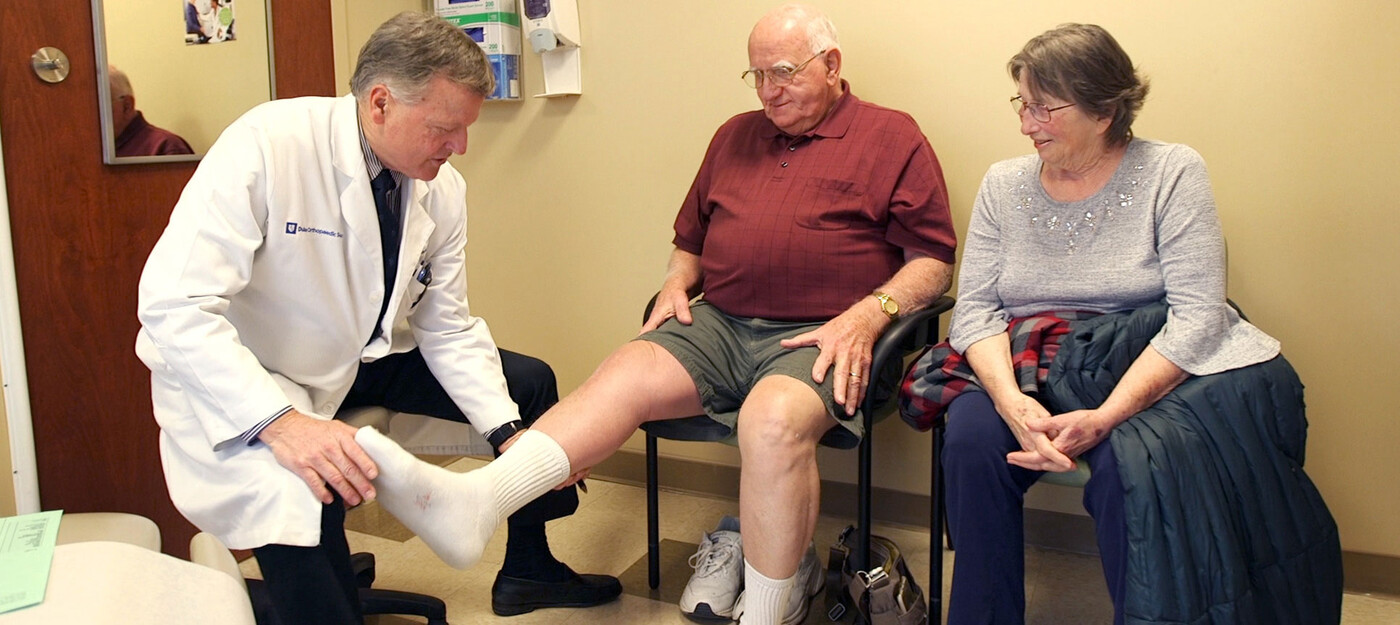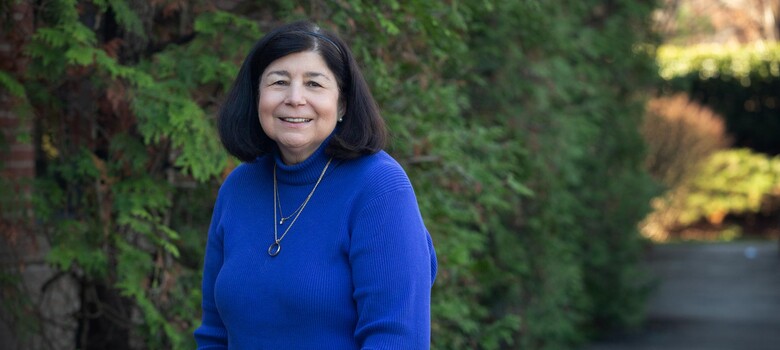Learning to Manage Chronic Joint Pain and Preparing for Joint Replacement Surgery
Duke Joint Health Program Helps People Become Stronger and More Active

Hubert Nall’s knee pain was so bad last year that it limited his ability to walk, climb stairs, and be active. However, that lack of activity also meant he wasn’t in great shape. It was a double-edged sword: His doctor told Nall he needed to lose weight and increase his leg strength before he could be eligible for knee replacement surgery.
Getting Stronger, More Active
“My right knee had been hurting for years, but it got to the point where I knew I needed to get something done,” said Nall, 74, of Greensboro. “It affected my quality of life. I couldn’t do the walking and the working I wanted to do."
To get Nall on the road to better health, his knee surgeon, William A. Jiranek, MD, suggested Nall participate in Duke’s Joint Health Program. There, physical therapists work with people like Nall to become stronger, more active, and better prepared for surgery -- if they still need it. Often, the 12-month program helps people avoid or delay joint replacement surgery, or changes the type of replacement surgery that is required.
"Our goal was to make sure that when they had surgery they were properly prepared, both psychologically and physically,” said Dr. Jiranek. “Our data suggests that we are making a difference.
What Is Duke’s Joint Health Program?
Duke’s joint health program provides comprehensive, personalized care to people with hip and knee osteoarthritis. The program brings together a team that includes orthopedic surgeons, physical therapists, dietitians, psychologists, and pain management specialists who address lifestyle habits that may contribute to chronic and debilitating knee or hip pain. During the year-long program, individuals learn to exercise more, manage their joint pain, improve their nutrition, and manage their weight. The program also addresses behavioral health, psychological distress, and sleep habits.
A Personalized Approach to Care
A personalized approach is key to the program’s success, said Morven Ross, PT, a physical therapist who runs the Joint Health program. "Together, we plan exercises and other lifestyle activities that will fit into each person’s daily lives.” That includes providing exercise and lifestyle recommendations for every individual’s ability, whether they are routine gym users or have never stepped foot in one.
The program provides ways to communicate with providers, including access through Duke’s secure online patient portal, Duke MyChart, as well as via email and phone.
Who Is a Candidate?
Program candidates are between the ages of 40 and 90 and have hip and/or knee osteoarthritis.
"We see people who have been told they are not currently candidates for a joint replacement due to weight, age, or other medical conditions but are still having pain,” said Ross.
Candidates are also people who don't want to get a joint replacement, and/or people who could benefit from joint replacement but need to lose weight, control their diabetes, get stronger, or learn pain coping skills before they can undergo surgery.

“Our data suggests that we are making a difference."
Working Toward Individual Success
Nall joined Duke’s Joint Health Program in January of 2018 and has been working with a physical therapist and a registered dietitian to improve his health. Under the guidance of physical therapist Andrea Christian, PT, he lost weight, became more active, and experienced less knee pain. His hard work with the program also helped him recover faster once he had the surgery, which took place one year after he joined the program.
That individual success is what’s so important to the physical therapists who work with joint health program patients. "I focus on what’s important to my patients, and the different ways their joint health is affected by their lifestyle,” said Christian, who worked closely with Nall at Duke Physical Therapy and Occupational Therapy in Hillsborough.
On the Road to Recovery
When she started working with Nall, he had knee pain in both knees. "He was having a lot of difficulty with functional mobility on a day-to-day basis. He was having pain with getting in and out of vehicles, stairs, getting up from a chair,” said Christian. “We initially started by just introducing a gentle range of motion for his knee and simple strengthening. Then we started advancing those strengthening exercises and implementing nutritional help.” By the time he had surgery, Nall had improved his strength, decreased his pain, and learned effective pain coping skills.
Within a month of his knee replacement surgery, Nall was back to working and driving. “Dr. Jiranek did a marvelous job,” said Nall. “And Andrea did a marvelous job preparing me for it."





